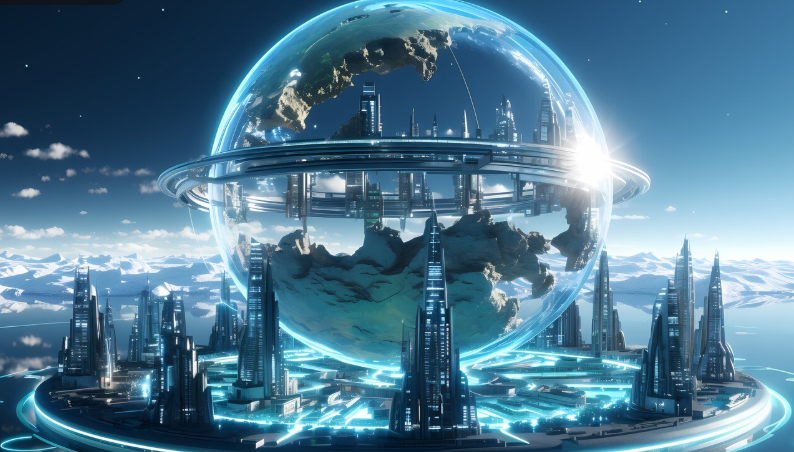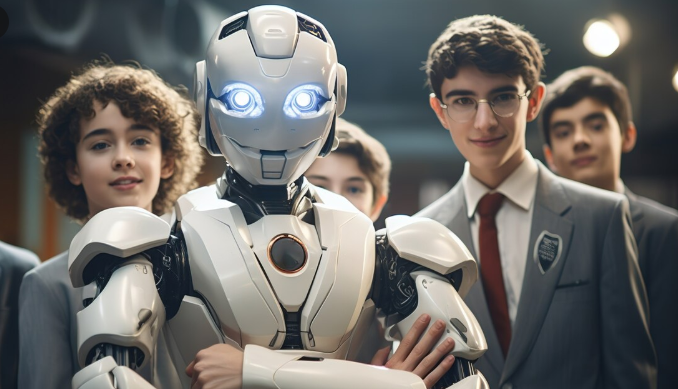Robotics has long been a field of fascination and innovation, but recent advancements in artificial intelligence, automation, and machine learning are pushing the boundaries of what robots can do. From assisting in homes to revolutionizing industries, next-generation robots are set to play a crucial role in everyday life. This article explores how robotics is transforming different sectors and what the future holds for human-robot interaction.
The Rise of Smart and Autonomous Robots
Modern robotics is moving beyond simple, pre-programmed machines to intelligent, autonomous systems that can learn, adapt, and interact with humans more naturally. These advancements are being driven by:
- Artificial Intelligence (AI): Enhancing robots’ ability to recognize patterns, make decisions, and improve their efficiency over time.
- Machine Learning (ML): Allowing robots to learn from experience and perform complex tasks without human intervention.
- Sensors and IoT Integration: Enabling robots to perceive their environment with high precision, improving safety and functionality.
These technologies are making robots more accessible, versatile, and effective in real-world applications.
How Robots Are Transforming Everyday Life
1. Smart Homes and Personal Assistants
Household robots are becoming increasingly sophisticated, making everyday tasks easier and more efficient.
- Smart Assistants: AI-powered robots like Amazon Astro and Google Assistant-enabled devices can help manage schedules, control smart home appliances, and provide real-time information.
- Cleaning Robots: Devices like the Roomba and Roborock vacuum cleaners use AI and mapping technology to clean floors autonomously.
- Companion Robots: Robots like ElliQ and Buddy provide companionship, monitor elderly users’ health, and offer reminders for medication or daily activities.
As robotics advances, personal assistants will become more interactive and capable of handling complex requests, improving quality of life at home.
2. Healthcare and Elderly Care
Robots are playing an increasing role in healthcare, assisting doctors, caregivers, and patients in various ways.
- Surgical Robots: Systems like Da Vinci Surgical Robot enhance precision in complex surgeries, reducing recovery times and risks.
- Telepresence Robots: These allow doctors to examine and interact with patients remotely, improving access to medical care.
- Elderly Care Robots: AI-driven robots help monitor health conditions, provide companionship, and assist with mobility for aging populations.
With aging populations worldwide, robotic caregivers are expected to become an essential part of healthcare systems.
3. Autonomous Vehicles and Transportation
Self-driving technology is advancing rapidly, and robots are set to transform the way people travel and transport goods.
- Autonomous Cars: Companies like Tesla, Waymo, and Uber are developing self-driving vehicles that could reduce traffic accidents and improve road efficiency.
- Delivery Robots: Drones and ground-based robots are being used by companies like Amazon and Starship Technologies to deliver food, groceries, and packages.
- Public Transport Automation: AI-powered buses, trains, and taxis are being tested in cities worldwide, aiming to create more efficient and eco-friendly transport systems.
As safety and regulatory challenges are addressed, autonomous transportation could become the norm in urban areas.
4. Industrial Automation and Manufacturing
Factories and warehouses are becoming increasingly automated, with robots improving efficiency, precision, and safety.
- Collaborative Robots (Cobots): Unlike traditional industrial robots, cobots work alongside human workers to perform repetitive or dangerous tasks.
- AI-Powered Quality Control: Machine vision and AI algorithms help detect defects in manufacturing processes with high accuracy.
- Warehouse Automation: Companies like Amazon use robotic arms, conveyor systems, and autonomous mobile robots (AMRs) to streamline logistics and inventory management.
As robotic systems become more adaptable, smaller businesses will also integrate automation into their operations.
5. Agriculture and Food Production
Robotics is revolutionizing the agricultural industry, improving productivity while reducing labor shortages.
- Autonomous Tractors and Drones: AI-powered tractors and drones monitor crops, optimize irrigation, and apply pesticides with precision.
- Robotic Harvesters: Machines equipped with advanced sensors can pick fruits and vegetables efficiently, addressing seasonal labor shortages.
- AI-Driven Food Processing: Robots assist in food packaging, sorting, and quality control, ensuring higher efficiency and safety in production.
By incorporating robotics, farms can produce more food with fewer resources, helping address global food security challenges.
The Future of Human-Robot Interaction
As robots become more integrated into daily life, human-robot interaction will evolve to be more natural and intuitive.
- Voice and Gesture Recognition: Robots will increasingly understand and respond to human speech, facial expressions, and body language.
- Emotional AI: Future robots may detect emotions and adjust their behavior to provide better companionship and customer service.
- Customization and Personalization: AI-driven learning will allow robots to adapt to individual user preferences and habits.
With ethical AI development, robots will enhance convenience, safety, and efficiency while complementing human abilities rather than replacing them.
Ethical and Social Considerations
While next-gen robotics offers numerous benefits, it also raises ethical and societal challenges.
- Job Displacement: Increased automation may replace certain jobs, requiring workforce retraining and new employment opportunities.
- Privacy Concerns: AI-powered robots collect and process vast amounts of data, raising concerns about personal privacy and security.
- Ethical AI Use: Ensuring that robots are programmed to make fair, unbiased decisions is essential for their safe deployment in society.
Governments, businesses, and researchers must work together to develop regulations that ensure robots are used responsibly and for the benefit of all.
Conclusion
The next generation of robotics is set to transform everyday life, from smart homes and healthcare to transportation and agriculture. With advancements in AI, automation, and human-robot interaction, robots will become indispensable assistants, improving efficiency and quality of life across multiple sectors.
However, as robotics continues to evolve, society must address ethical challenges and ensure that technology is developed responsibly. By embracing innovation while prioritizing human values, the future of robotics will be one of collaboration, progress, and endless possibilities.


